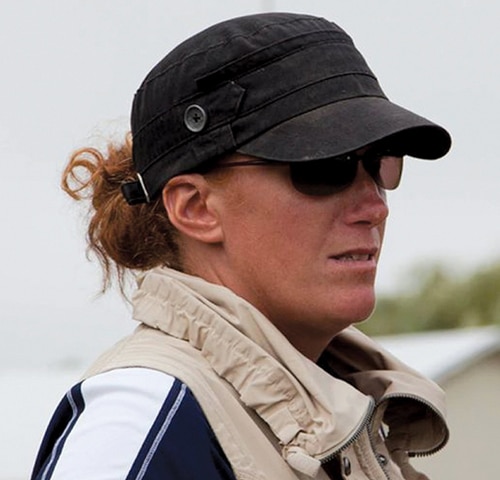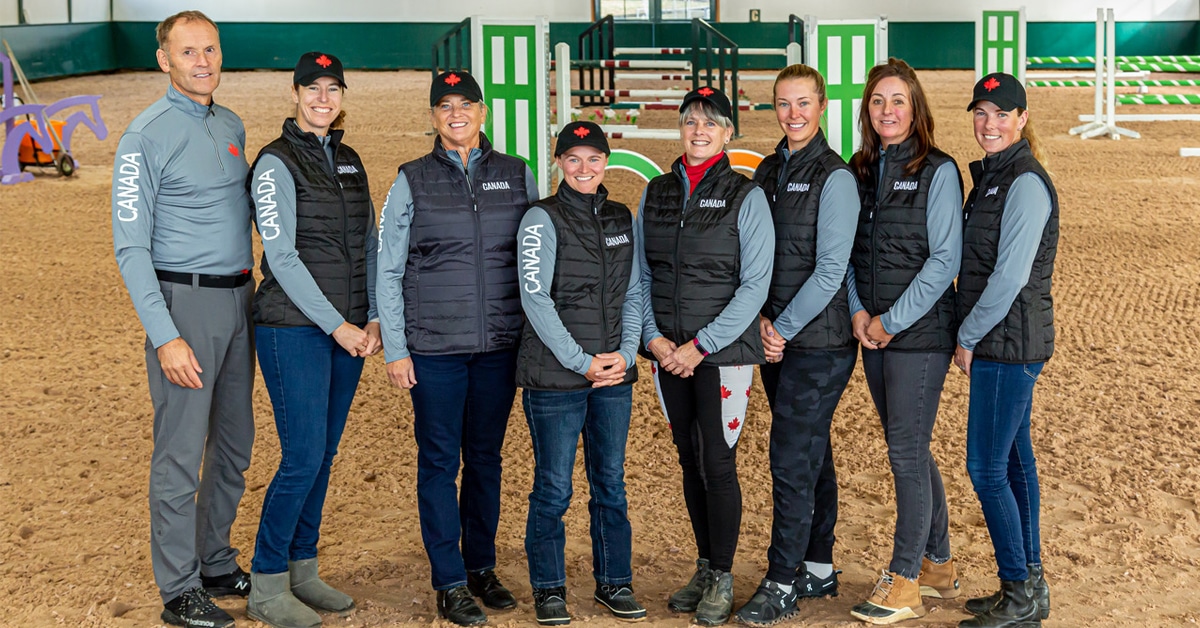The Competition Development Coach (HP1) is the highest level of coaching certificate within Equestrian Canada (EC). It is part of the equestrian portion of the National Coaching Certification Program (NCCP) and run in partnership with EC. The only higher status would be HP2 – which has yet to be developed. This would be specifically targeted to National Team Coaches, and they are currently advised to do an NCCP Advanced Coaching Diploma.
Getting the Competition Development Coach certification for High Performance athletes is a huge achievement; at this level, coaches are getting students to serious podiums. The path to achieving this level of certification has been made a little more friendly thanks to Ruth Allum of Oakhurst Farm in Ashton, Ontario.
Having been through this very process herself, Allum experienced the problems with the program first-hand. Getting her certification involved a lot of self-directed learning, and because of that, “many coaches were getting lost on the journey,” says Allum.

“We have to move to a sport that is science- and data-driven so that we are competitive with other sports.” ~ Ruth Allum.
Allum thought she could make it easier to help other coaches through the process and approached EC about developing a new system. After some adjustments, EC and Sport Canada approved the program, which is now entering its third and final pilot year. After each of the first two years, an independent audit was done with the coaches who went through the program and their insights were incorporated. At the end of this third year, the program and its materials will receive final approval by the Coach Association of Canada. As Allum and her team have been working with the Association throughout the pilot, no surprises are expected.
One of the major changes in the program is that instead of learners having to go through it alone, candidates can be put into a cohort with other coaches pursuing certification. From March to December, the group follows a shared structure and deadlines. It’s a blended learning environment with a mix of synchronous, asynchronous, and in-person learning.
The program is built on a facilitated learning model where the coaches are given the tools they need to find the answers on their own. “We don’t tell them how to train – we give them the resources,” said Allum. “They figure out what they want to train next to close the gap in the training performance that they see. We teach them how to analyze and what to analyze and then what to do with all that information.”
To apply, each coach submits a Yearly Training Program (YTP). Those that are accepted enter the program with a student at the appropriate level and one of their first tasks is to submit an analysis of their own athlete. All the coaches follow the progress of each of the students as the coaches work to fill identified performance gaps. Ten months later, they finish by making a presentation to a panel that demonstrates how they closed the performance gap using video evidence. They also submit a new YTP that shows improved training methods based on what they have learned.
Along the way, coaches are given access to experts and tracking tools and data resources that they may not have seen before. They learn how to build an effective YTP and about Gold Medal Profiles for sport psychology which tracks intangible performance competencies such as how coachable an athlete is, how much emotional or financial support they have, how good a horse is at travelling, how many horses does the athlete have, etc. They also learn about podium results tracking and data analysis. They hear presentations from coaching experts on how to lead effectively, the psychology of performance, and more. All these tools can be leveraged to better coach athletes, but also to create plans to show owners and sponsors real improvement.
“We have to move away from feel and intuition,” explained Allum of an industry that often resists evolution. “We have to move to a sport that is science- and data-driven so that we are competitive with other sports.”
Coaches also get the chance to meet and work together, giving them a sense of community within the program. They can bounce ideas off each other and support one another as they practice newly acquired skills. It’s particularly exciting because the coaches come from a wide variety of backgrounds and in some cases might not have crossed paths otherwise.
“We have coaches not just in dressage/jumping/eventing – we have reining coaches, we have a para-dressage coach, we have a vaulting coach, we have eventing athletes and coaches that are working the national team programs,” says Sophie Balogh, Coordinator of Online Education with EC. “Last year, we certified our first endurance HP1. She’s also a coach developer herself, and coaches at the World Equestrian Games level.”
The learning opportunity is rich, Balogh says. “Every single coach that comes through the program has a different experience, background; they bring so much value to the table and we get to learn from them. That’s incredible.”
Another improvement of the program includes a more collaborative in-competition evaluation. To avoid confusion, a pre-brief with the coach candidate and the coach developer is held so that expectations are clearly defined. Throughout the competition season, coach developers – who are Allum, Christilot Boylen and Jon Garner in 2023 – will go to an identified competition from the athletes YTP. Evaluations include watching coaches with students, watching warm-ups, and doing an interview at the show to get a sense for their program, and give feedback.
Allum says that when she goes out to observe them, you can see “first the nervousness of a coach to have somebody come and evaluate them in front of their clients.” But it’s also “the most rewarding experience, because you get to see them do what they do best. You’re not walking around with a clipboard, you’re just there observing. It’s phenomenal.”
Prior to the pilot program, only three people had passed the Competition Development Coach certification in the 10 years previous. Those numbers have risen significantly since the pilot program began: in its first year, eight graduated, and in its second year, 11 people graduated. This year, the program is accepting 16 coach candidates.
But it’s not just that more people are passing than before; the coaches are also embracing the tools that they acquire throughout the program, compared to feeling like the program was simply a “paperwork exercise” to get through, says Balogh.
“We had a coach that came through last year’s program with the [attitude]: ‘I have to get certified, so here I am, I’ll jump through the hoops you need me to jump through,’” Allum says. Last month, that coach sent Allum a video of the prep for her pre-season show team meeting, complete with flip charts and seasonal plans she was going to have each rider complete. “She has willingly integrated this into her program because she sees that it’s useful,” Allum says.
Perhaps the most important part of each program, though, are the relationships that get built throughout each cohort. Those relationships are “pivotal in making the program a success,” Balogh says.
The coach candidates are all “so different, and you can imagine an incredibly strong-willed set of individuals that come together,” Allum says. She loves watching the groups interact, embrace their differences, and work together. “You let them teach each other.”
She concludes, “This is a group of people that are already performing as coaches. They’re already out there doing it, and that takes some risk for them to come into this program and put themselves under a microscope and say, ‘you may expose some of my weaknesses as a coach.’ We expect them to embrace their weaknesses sometimes and really be a bit vulnerable.”
“If these coaches take some of these tools and get people on podiums, and we’ve had a hand in that, awesome,” Allum says. “Like coaching an eventer: you get them to the start box, and you want them to go out and succeed without you.”

